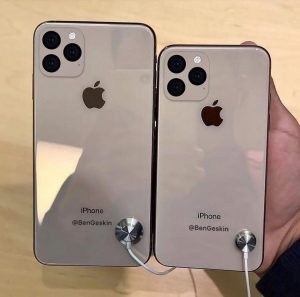It has been widely rumored that Apple will be launching three new iPhone models later this year; the first device is expected to be a relatively cost-sensitive model that will include the same core features as the higher-end models, but will use less advanced display technology as well as a cheaper aluminum construction; the middle device is rumored to be a direct successor to the current iPhone X, with a similar appearance and display size but with upgraded internal specifications; the third and highest-end model is thought to be a bigger version of the successor to the iPhone X, with a larger 6.46-inch display.
Since 2014 when Apple began offering standard and Plus-size versions of its iPhone models, they have been revealing latter versions with unique features and improved specifications compared to the standard-sized models. For example, the iPhone 8 and iPhone 8 Plus. Features of the Plus include a sharper display, dual rear-facing camera, plus-specific software features (e.g., landscape home screen, split-screen view in several common apps), and more RAM (2GB in iPhone 8, 3GB in iPhone 8 Plus).
However, based on a set of credible leaks from both KGI Securities analyst Ming-Chi Kuo and Bloomberg, Apple has no intention of differentiating the updated iPhone X from the iPhone X Plus with any big changes.
 As far as the positives for this strategy, Apple’s supply chain management becomes easier and loyal Apple customers who are willing to pay top dollar for new iPhones don’t feel that they are buying an inferior device by picking the smaller of the two iPhone X models. Additionally, by using the same basic components, Apple minimizes the bill of materials increase from the standard iPhone X to the iPhone X Plus. A con to this strategy is that Apple misses out on the opportunity to improve the competitiveness of its larger-screen model, as there are features that are easier to implement in larger devices with bigger batteries than they are in smaller devices with commensurately smaller batteries.
As far as the positives for this strategy, Apple’s supply chain management becomes easier and loyal Apple customers who are willing to pay top dollar for new iPhones don’t feel that they are buying an inferior device by picking the smaller of the two iPhone X models. Additionally, by using the same basic components, Apple minimizes the bill of materials increase from the standard iPhone X to the iPhone X Plus. A con to this strategy is that Apple misses out on the opportunity to improve the competitiveness of its larger-screen model, as there are features that are easier to implement in larger devices with bigger batteries than they are in smaller devices with commensurately smaller batteries.








